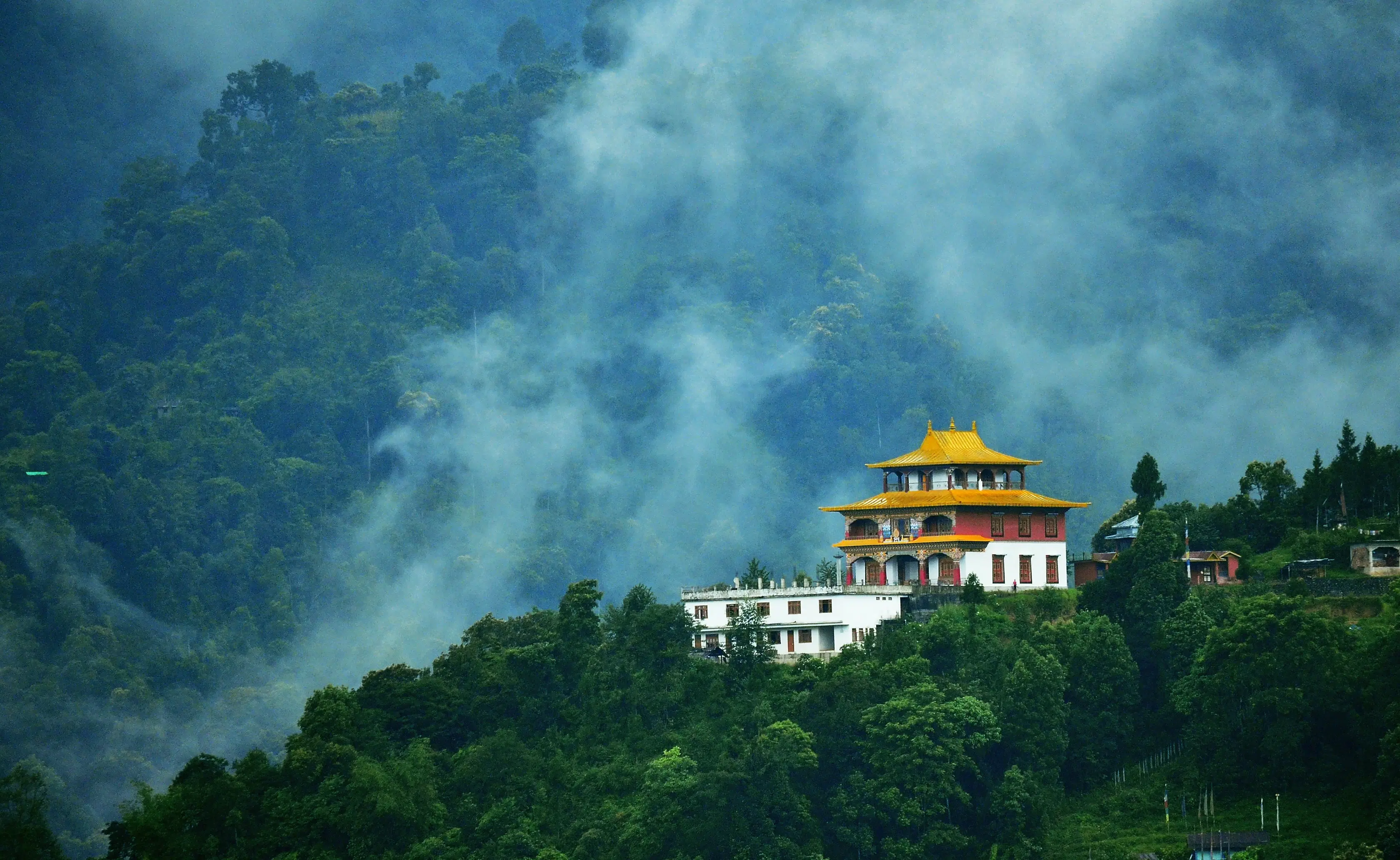
Hotels
•04 min read

Dreaming of a Bhutan vacation where the weather is just right? Planning your trip around Bhutan's unique climate can make all the difference in creating unforgettable memories. Book your Bhutan getaway through Tata Neu Travel to enjoy exclusive member deals and earn NeuCoins on your booking (1 NeuCoin = 1₹ saving), reinforcing the Tata legacy and loyalty benefits. Bhutan’s climate is as diverse as its enchanting landscapes, offering distinct experiences across its four seasons. In this guide, you will discover how the climate best time to visit Bhutan influences every aspect of your journey—from trekking through blooming valleys in spring to enjoying the vibrant festivals of autumn.
Bhutan experiences four distinct seasons: spring, summer during monsoon, autumn, and winter. Each season unveils a unique charm that caters to different travel interests. The country’s geographical diversity—from low-lying valleys to majestic high-altitude regions—creates varied weather patterns that are ideal for outdoor activities, sightseeing, and cultural experiences. This guide on the climate best time to visit Bhutan helps you choose the ideal season for your adventure.
Understanding these climate patterns is essential for planning activities such as trekking through natural trails, exploring ancient dzongs, and partaking in local festivities. When you know what weather to expect, you can pack appropriately and choose activities that maximize your experience.
Spring in Bhutan is a delightful season marked by moderate temperatures and the mesmerizing bloom of wildflowers, including the famous rhododendrons. It is an ideal time for trekking and exploring the awe-inspiring Paro Valley or visiting Punakha Dzong, surrounded by a burst of floral colors.
The summer months bring monsoon rains that transform Bhutan into a lush green paradise. While the rainy season can mean a few interruptions for outdoor activities, budget travelers and those seeking a different travel experience can enjoy quieter destinations and the vibrant natural beauty without the crowds.
Autumn is widely considered the best season for Bhutan travel. With clear skies, pleasant temperatures, and the thrill of vibrant festivals such as the Thimphu Tshechu, this period offers perfect weather for sightseeing and cultural immersion. The crisp air and stunning mountain views create lasting memories for every traveler.
Winter in Bhutan offers a stark contrast with its cold weather and peaceful, snow-covered landscapes. This season is perfect for those who prefer solitude and wish to experience the tranquility of fewer crowds. Wildlife enthusiasts can also catch a glimpse of the elusive black-necked cranes in the Phobjikha Valley during these months.
Explore the Paro Valley for its excellent trekking trails and visit the iconic Punakha Dzong enveloped by blossoming flora. The vibrant hues of spring make this region a haven for nature lovers.

Thimphu comes alive with festivals and cultural events during autumn. Bumthang, with its rich cultural heritage, complements the festive spirit and offers immersive experiences in Bhutan’s traditions.
For those seeking solitude, the Phobjikha Valley offers an idyllic retreat with its serene, snow-laden environment. Paro also presents quiet nooks perfect for reflection and rejuvenation.
Southern Bhutan, with its subtropical climate, is best explored during the monsoon. This region, though less conventional, offers unique insights into local life and untouched landscapes that remain inviting for the more adventurous.
In spring, opt for boutique hotels in Paro and Punakha to enjoy stunning scenic views. Experience the renowned hospitality of Tata’s Taj Hotels and Vivanta Hotels curated to offer both luxury and personalized comfort. The monsoon season welcomes budget-friendly stays in Thimphu and the southern regions. During the peak travel months of autumn, luxury accommodations near festival venues combine comfort with cultural immersion, while winter is best experienced from cozy lodges in remote, tranquil settings.
Select hotels and homestays that are conveniently located near your chosen attractions. Consider the seasonal variations to ensure that your accommodation matches the weather and the activities you plan. With thoughtful planning, your stay in Bhutan becomes an integral part of the experience.
Our comprehensive Bhutan travel guide for tourists offers practical advice, from top destinations to the best weather to visit Bhutan, ensuring you know exactly where to stay during your trip. Practical tips for your journey include packing layers for temperature fluctuations, carrying waterproof gear during monsoon rains, and planning transportation in advance to navigate the unique terrain of Bhutan. Whether it’s for a family vacation, a professional trip, or a spontaneous escape, tailoring your travel plan to the seasonal climate will ensure a seamless experience.
Insight Corner: "Did You Know?"
Bhutan’s autumn months (September to November) are considered the best time to visit for perfect weather, vibrant festivals, and breathtaking views of the Himalayas. However, winter offers serene landscapes and fewer crowds, ideal for those seeking tranquility.

Spring is ideal for nature lovers. Remember to pack layers as temperatures can vary throughout the day, ensuring you are comfortable while exploring the natural beauty of Bhutan.
During the monsoon, it’s best to carry waterproof gear and plan cultural tours over outdoor adventures. Enjoy the lush scenery with a focus on indoor cultural experiences and local cuisine.
Autumn is a popular season, so booking accommodations early is essential. With festivals in full swing, ensure your travel itinerary allows you to savor the unique cultural events without any rush.
Prepare for cold temperatures by packing warm clothing. While certain high-altitude attractions might be less accessible, the reward is a peaceful journey with breathtaking winter landscapes that offer a unique charm.
October is widely considered the best month due to clear skies, vibrant festivals, and favorable weather for trekking based on historical weather trends and local tourism data.
January is the coldest month in Bhutan, with temperatures often dropping below freezing in high-altitude areas.
The rainy season in Bhutan typically occurs from June to August during the summer monsoon.
The off-season is during the monsoon months (June to August) and winter (December to February), ideal for budget travelers seeking fewer crowds.
Bhutan’s climate provides a canvas of breathtaking experiences tailored to every traveler’s taste. With the clear, crisp temperatures of autumn and the blossoming warmth of spring, most tourists will find the perfect balance of activity and relaxation. Winter and monsoon seasons offer niche opportunities for those seeking tranquility and a budget-friendly escape. By understanding the climate best time to visit Bhutan, you can tailor your trip to the weather, activities, and destinations that enrich your travel experience. Book through Tata Neu Travel to enjoy a seamless, rewarding journey filled with enriching memories. Thoughtful planning leads to memorable adventures that reflect the essence of a truly enriching journey.